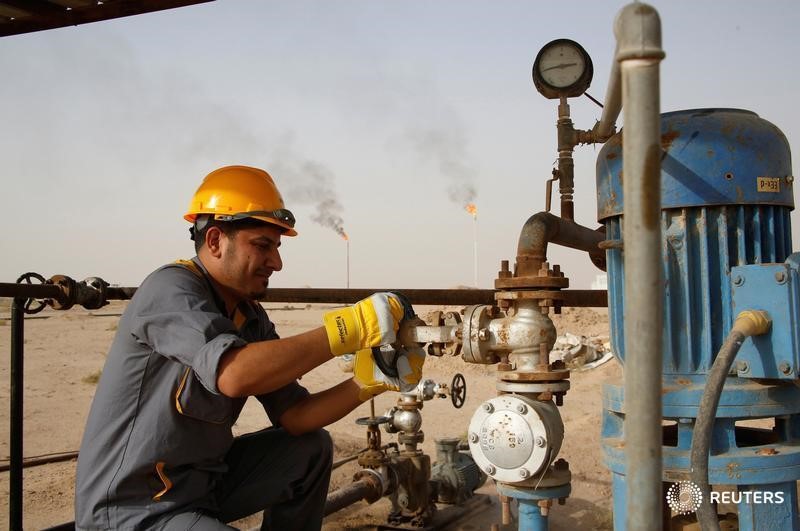Investing.com - Oil prices gained in Asia on Thursday as the world's top oil importer gets set to detail fourth quarter growth figures and the market stays upbeat on a larger that expected draw in US crude stocks under industry estimates.
On the New York Mercantile Exchange WTI crude futures for February delivery rose 0.31% to $64.28 a barrel, while on London's Intercontinental Exchange, Brent edged up 0.03% to $69.46 a barrel.
China reports fourth quarter GDP on Thursday that is expected to show a 6.7% gain on year and a 1.6% rise on quarter. In the third quarter, GDP rose 6.8% on year and 1.7% on quarter.
As well, in China industrial production is expected to post a 6.0% gain on year in December from 6.1% in November and retail sales are seen up 10.1% on year in December, compared to 10.2% in November.
US crude oil inventories fell 5.121 million barrels last week, the American Petroleum Institute said Wednesday, a bigger drop than expected.
Gasoline inventories rose 1.782 million barrels and distillate stocks rose by 609,000 barrels. Supplies at the oil storage hub of Cushing, Oklahoma, fell by 3.936 million barrels.
US crude oil inventories were expected down 3.536 million barrels last week. Gasoline stocks were seen up 3.426 million barrels and distillate inventories up by 86,000 barrels.
Official data from the Energy Information Administration is due on Thursday, a day later than normal because of a public holiday on Monday.
Later on Thursday, OPEC releases its montky production figures and on Friday the Paris-based International Energy Agency will detail global supply and deman in its monthly report.
Overnight, crude oil prices settle higher as positive commentary concerning the OPEC-led pact strengthen investor expectations that the oil cartel would continue with output cuts.
Kuwaiti energy minister Bakheet Al-Rashidi said the oil market was “very stable” and vowed that OPEC remains committed to output cuts “no matter the price.”
That eased some investor concerns that OPEC would seek to exit the agreement as the recent surge in prices is expected to lead to a ramp up in non-OPEC output, led by the U.S. shale producers.
